The weather has certainly changed. We are now finally getting sufficient rainfall aid recovery from that exceptional dry period. However, rain alone will not be enough. We ideally need to carry out some additional maintenance regimes to aid the grass to recover while we still have some warm temperatures. Therefore some regular aeration, brushing, feeding and in some cases verticutting and overseeding, will certainly help rejuvenate our playing surfaces.
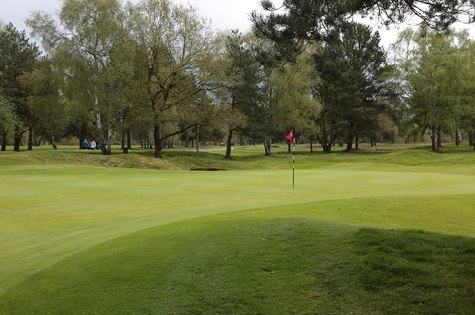
Enville Golf Club
Most cricket and bowls clubs should have completed their end of season renovations, while our predominantly winter games pitches of rugby and football are well into their weekly maintenance regimes - divoting, mowing, verticutting, aerating, brushing, over marking and watering.
Keep an eye on fungal disease attack. Use approved fungicides to treat infected areas. Fairy rings and red thread can often become widespread during September.
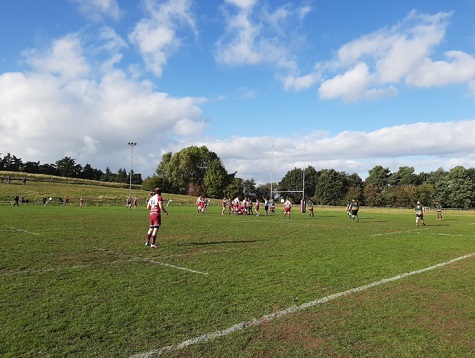
Newport RFC vs Market Drayton rugby match
As for marking out your pitches, it is essential you check your pitch dimensions and accurately mark out your pitch to the sport’s governing bodies regulations. In recent years we have seen the development of GPS guided line markers and robotic marking machines. These are now becoming more widely used by many sports clubs and contractors, mainly due to the fact they produce an accurate white line, and generally save a lot of time.

TinyMobileRobot line-marker
For me it seems a no brainer to hire one in for the initial marking of your pitches, as it will save you a lot of time and money and more importantly set you up with accurate straight lines for the start of the playing season. In most cases it is going to cost around £100 per pitch, however the more you do the cost may come down. Also with using a robotic line-marker, the work can be done in less than an hour, whereas it would usually take at least 2-3 hours on your own using strings and measuring out.
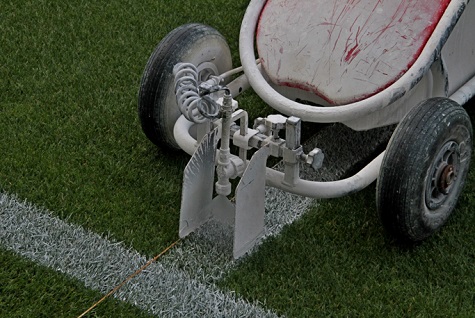
Spray jet line-marker
I have certainly been impressed with the ones I have seen in action, and they are now becoming more widely used by many sports clubs.
As for the choice of marking paints, there are now a wide range of makes and colours available from manufacturers. However, some specific marking machines will only tolerate some types of paint especially when using spray jet line marking machines.
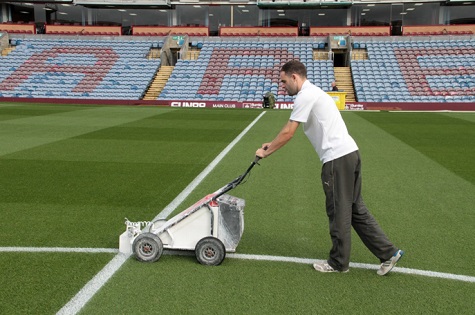
Spray jet line-marking at Burnley FC
And finally regarding line-marking, keeping the machine in good working order and keeping it clean and washed out after use will prolong the life of the machine and ensure it works efficiently.
Line-marking machines and the paint are not cheap. A decent spray jet line-marker will cost anything from £900-£1500 and a 10 litre tub of white paint between £50-70 depending on make and brand.
A wheel-to-wheel transfer line-markers are costing around £700, so the art of line-marking and the provision of well-marked out pitches is now coming at a cost when you take into account labour and cost of equipment and materials.
Disease
The months of September and October are renown for exacerbating outbreaks turf disease. The warm, moist conditions are primary drivers in the development of disease outbreaks, as the spores need moisture and warmth to regenerate and spread.
Recently, we have seen evening air temperatures dropping dramatically, especially when we have clear cloudless nights, resulting in heavy morning dews on our playing surfaces.
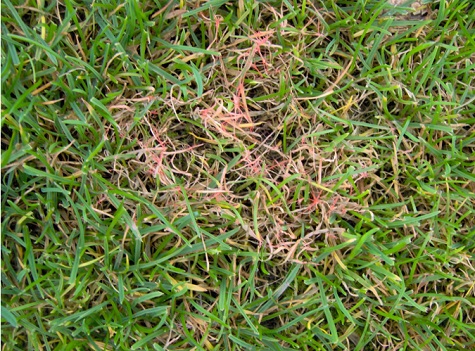
Red thread disease
The combination of early morning dews, warm and wet weather and diminishing daylight hours increases the risk of fungal disease outbreaks. The right conditions to trigger these disease attacks are weakened or susceptible plants, a disease-producing organism (pathogen usually fungi) and weather conditions which favour the formation of fruiting bodies and spores (moist, mild wet conditions).
Most diseases that are occurring now have responded to the unusually warm, autumn weather conditions. Boundary layers around the leaves have stayed very moist and humid. Relative humidity is important for spore germination and penetration of leaf tissues, and constant wet conditions will allow the development and transportation of active fungi spores.
Most fungi grow well between 10°C - 40°C and function best at a pH range of 4-7pH. The current lack of cooler weather and sharp frosts has not helped in reducing these active pathogens.
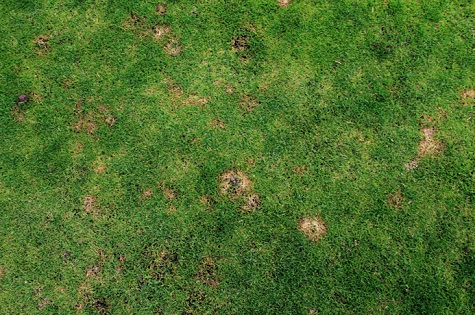
Disease outbreak in fine turf
The first step in turfgrass disease management is identifying the true nature of the problem. Diseases are only one cause of turf loss and disease control measures will do nothing to alleviate damage from other causes such as management, wear or plant stress. It is therefore essential to determine whether the problem is disease, and if so, which disease.
Over the years, we've developed many methods of removing dew from playing surfaces. These range from those that can be fitted to both mowers and gators to speed up operations, though hand switching that also gives you an opportunity to get close and personal and keep an eye on what's happening.
Site characteristics and turf management practices have a large influence on disease management. Factors such as air movement, drainage, soil conditions, and the amount of sun or shade, slope, fertilisation, and aeration programmes are important in influencing the development of turf diseases.
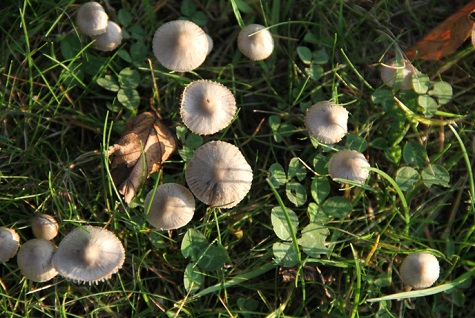
Fungi fruiting bodies